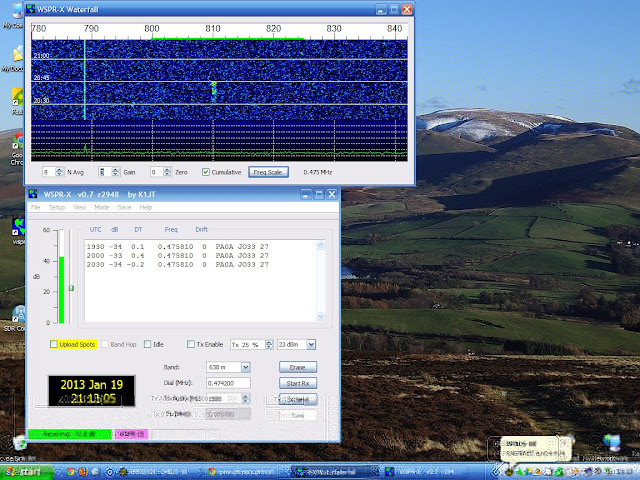 First WSPR spots on 630m
First WSPR spots on 630m
A few of my blogging colleagues have written about having surprising success WSPRing with modest antennas on the 474kHz VLF band. I thought I would try to see what if anything I could spot using my attic dipole as an antenna.
 |
| Receiving WSPR-15 on the 630m band |
I downloaded the WSPR-X software which supports the new WSPR-15 mode. (The standard WSPR for HF and VHF is now called WSPR-2, the number indicating the duration in minutes of the transmit cycle.)
First problem was to find a receiver that would tune to 474kHz. My K3 would not tune below 490kHz nor the KX3. My K2 doesn’t have general coverage at all. My SDR-4 receiver would not go anywhere near the frequency. My FT-817 came to the rescue. I took it out of the drawer, blew the dust off it, found a power lead, switched it on and it tuned to 474.2kHz quite nicely.
The next problem was to find a sound card to receive the audio. I have three USB sound devices currently connected to the shack PC and I could only identify which driver was for which sound card by trial and error. After I realized that WSPR-X can be used for HF WSPR as well I tried it out first on 30m. For about an hour I had confusion as I did not seem to be receiving any WSPR signals at all. Eventually I tried WSPR-X on the sound card used by my K3. Once I verified that the program worked and was decoding spots I then tried receiving 30m WSPR on the ‘817. Once that was successful I tuned the receiver to 474.20kHz, set the mode to WSPR-15 and left it for a few hours to see what would happen.
I was doubtful whether I would receive anything on my 80 – 6m multiband dipole which is too short and totally unmatched on the 630m band, but when I came up to the shack later this evening I saw there were three spots of PA0A in JO33 at 30 minute intervals! These spots were not reported to WSPRnet as I had been so pessimistic of my chances of decoding anything that I hadn’t bothered to tick the “Upload spots” check box.
So the experiment was a success. I doubt that I will receive anyone else on this antenna so it is probably not worth leaving the radio set up for it but it was fun to see what can be received here on this new amateur band.












